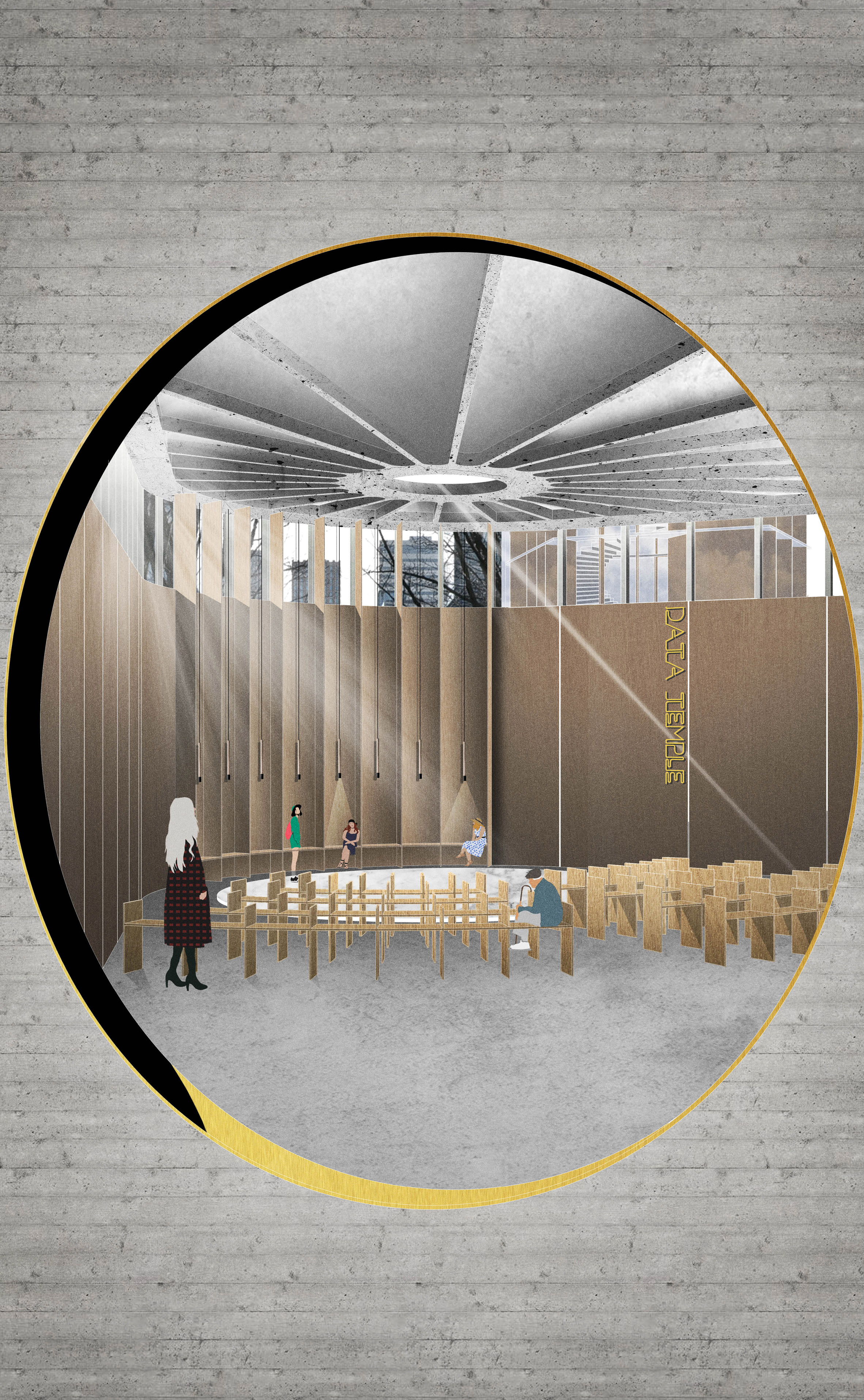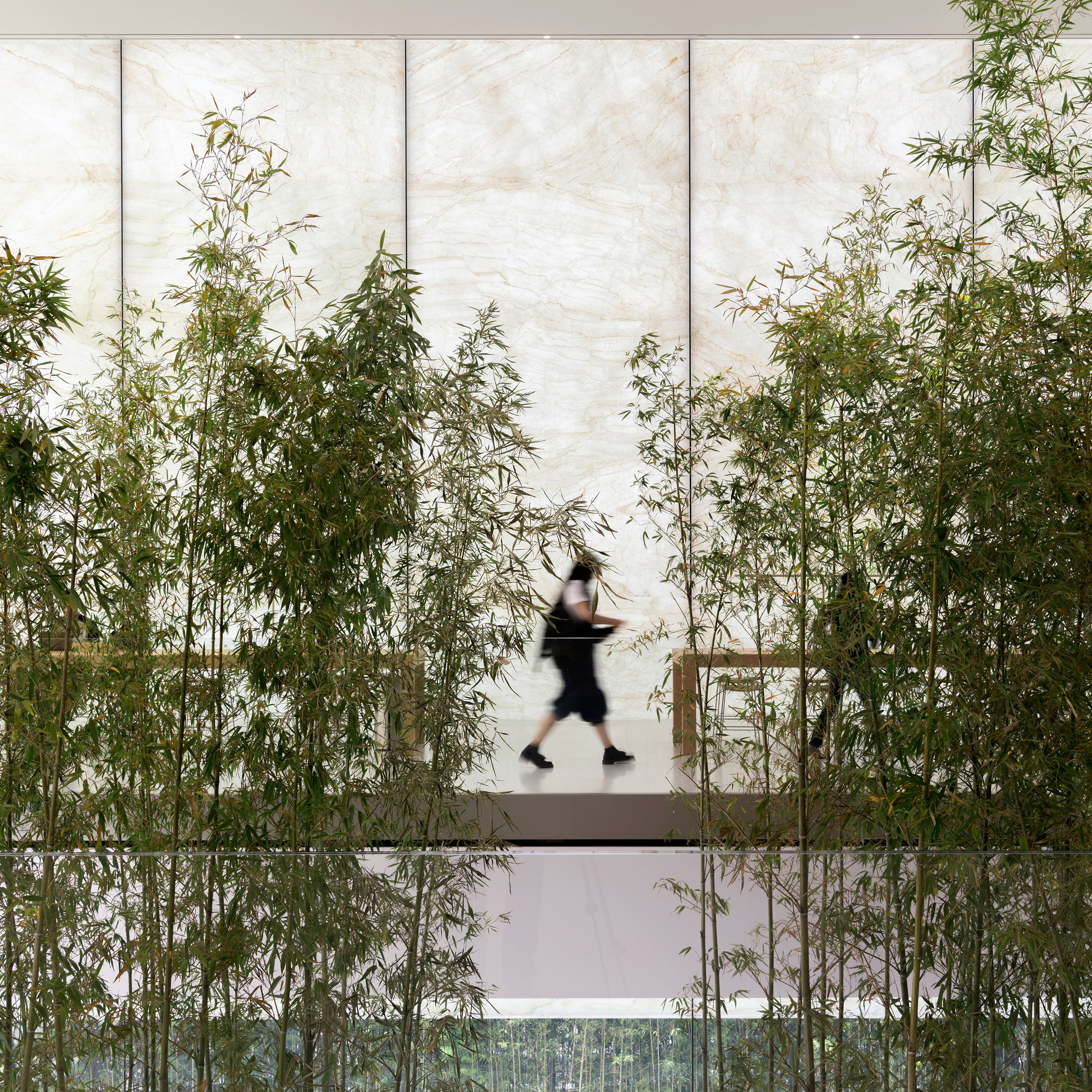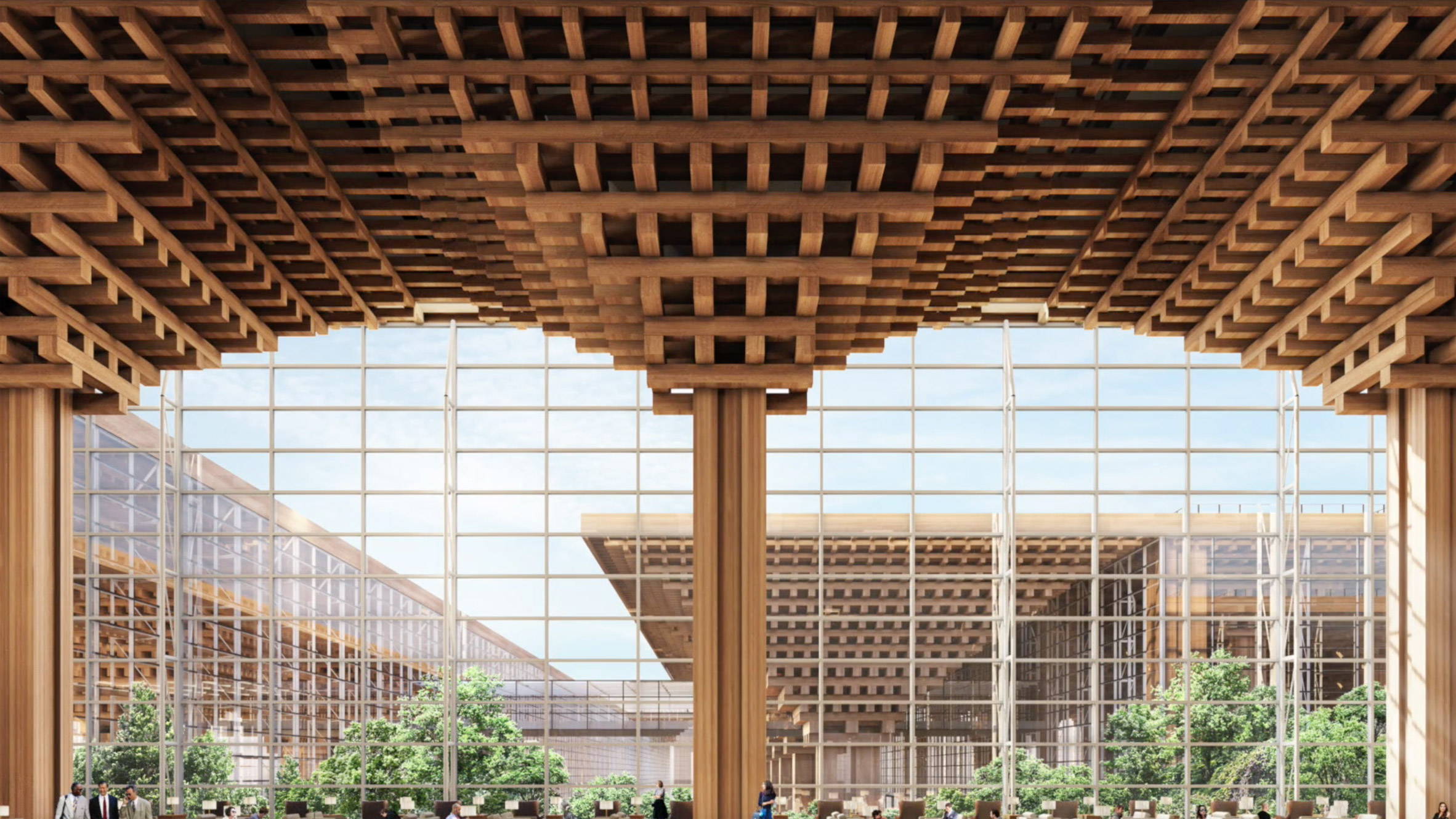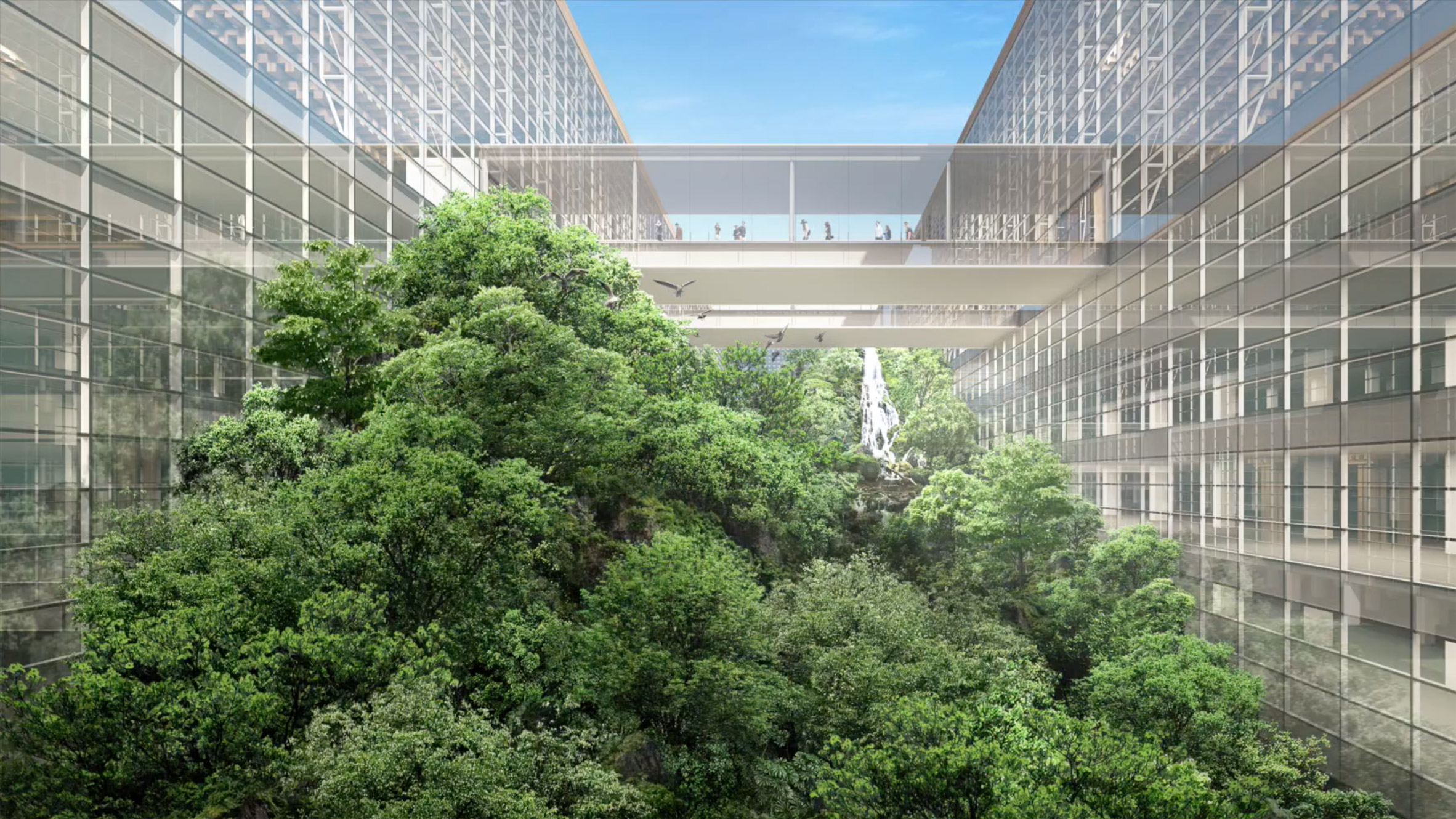Dermot Horgan imagines personal data bank at centre of future Amsterdam neighbourhood
Dezeen August 31, 2018TU Delft graduate Dermot Horgan has created a concept for a neighbourhood that would be built around a publicly accessible data bank, to make the topic of personal information central to society.
In Horgan's vision of future Amsterdam, individuals rather than companies will control how their data is stored and who is allowed to use it.
He developed the Data Municipality proposal for his final project on the Architecture, Urbanism and Building Sciences masters course at Delft University of Technology.

"As data becomes the resource of the 21st century we must be made aware of just how valuable our information really is," said Horgan in his thesis.
"Data should become a transparent aspect of our daily lives expressed through an architecture."
"Data must become an open-source resource in the 21st century, non-personal data must no longer be for the few, but for the many," he continued.

Horgan's plan places a publicly accessible data bank, university, library and temple at the centre of a neighbourhood in bid to make the "removed" topic of data storage more central to society.
Transport links, a lecture hall and a market square seek to cement the data bank as a vibrant and integrated public space.

"The action of making available all public data, or data relevant to the public realm, from a societal aspect could inform an entirely new innovative movement as people have the knowledge and access to vast amounts of information," said Horgan.
"No longer could industry quash innovation for profitable gain but rather the act of innovation and commercial transparency could strengthen our entire democratic society whilst simultaneously informing a new and transparent immaterial data landscape. Closing the data circle."

Death is also factored into the vision, with Horgan suggesting that some users of the facility may wish their information to follow their human lifespan to prevent a "data postmortem".
For this, a temple and on-site mausoleum allow an individual's data to be celebrated and laid to rest.

"If we imagine a scenario where all personal data's storage is controlled by the user, then we can imagine that data should also cease to exist as we do," he said.
"Thus as we look at a future in which data is 'all that we are' we too might wish to celebrate the life of ones data and place it within its own resting place."

Horgan selected concrete, brick and glass as construction materials that would allude to the transparency or "honesty" of the scheme's mission.
His visuals show slender etched and board-marked concrete frames surrounding the large windows of the data bank, while the university is given a more traditional appearance with the use of local Amsterdam bricks.
"'Honesty' in materials choices was very important to a new democratic typology," he said.
Previous TU Delft graduates have developed concepts for a robotic pillow that "breathes" to soothe users to sleep and a 3D-printed steel bicycle frame claiming to be a world first.
The post Dermot Horgan imagines personal data bank at centre of future Amsterdam neighbourhood appeared first on Dezeen.
from Dezeen https://ift.tt/2N4PcBg
via IFTTT






































